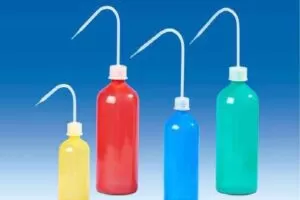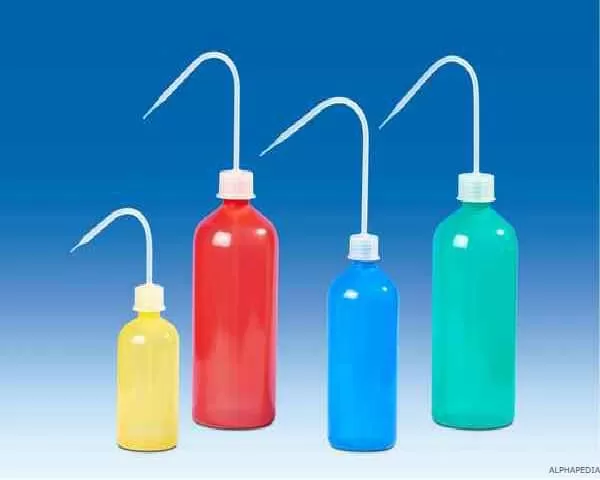What is The Wash Bottle ? Definition
The Laboratory Tissue, also called a wash bottle, is a sealed cylindrical container with a screw cap, which has a small tube with an opening capable of dispensing water or any other liquid contained inside, in small quantities.
It is normally made of plastic and its main function in the laboratory is to wash containers and glass materials. It is also called washing bottle or washing flask. Generally, distilled water is used to remove products or reagents impregnated in the materials.
Easily squeeze the plastic washing bottles to spray solutions contained in the long-stemmed nozzle. Leakproof wash caps provide a single drop or needle-thin stream with fingertip pressure flow control. Due to its shape and function it can be used vertically.
Color-coded closure models save time, prevent identification errors and increase safety. The durable construction allows the wash bottles to safely contain common solvents. Bottles come in a variety of milliliter and ounce volumes to satisfy user preferences.
GHS Safety Label Wash Bottle
The pre-labeled wash bottles come with a permanent writing indicating the contents of the wash bottle, which includes:
Acetone, ethanol, methanol, mek, distilled water, ims, isopropanol, machine oil, deionized water, dichloromethane, ethyl acetate, salt solution, soap, sodium hypochlorite, toluene, water or label your own.
Pre-labeled wash bottles are available:
- Indelible printed text in up to 4 languages (multi-language designs include English, French, German and Spanish)
- Choose from four types of labels, including the new globally harmonized symbols (GHS), NFPA diamonds, risk phrases and basic safety information.
- Equipped with color-coded PP closures. The closures feature a precision-blasted opening for fine control.
- GHS wide mouth wash bottles have a steam vent valve to prevent solvent dripping.
- GHS compliant multilingual wash bottles come in LDPE (most common) or autoclavable polypropylene (DL-506495-0005, ideal for more aggressive chemicals such as dichloromethane and MEK / methyl ethyl ketone).
Low Density Polyethylene Wash Bottle
Low-density polyethylene (LDPE) wash stands or bottles offer good strength and chemical resistance for everyday use and are ideal dispensers for solvents. Used in laboratories for washing microelectronic parts for a variety of manufacturing applications. Offers a variety of LDPE plastic wash bottles, from GHS compliant multi-lingual printed plastic wash bottles to numerous integrated, color-coded plastic wash bottles.
Only polypropylene wash bottles can be autoclaved. Pre-labeled scoops come with permanent writing indicating the contents of the scoop, which includes acetone, ethanol, methanol, mek, distilled water, ims, isopropanol, machine oil, deionized water, dichloromethane, ethyl acetate, salt solution, soap, sodium hypochlorite, toluene, water or label your own.
Adjustable Spray Wash Bottle
This dual-headed wash bottle has an adjustable spray stream and will keep the contents completely free of contaminants if the sprayer and side fill opening are in the closed position. Convenient dual-head design and side fill opening. Instant release eliminates dripping. High-density polyethylene construction.
Convenient side fill opening helps maintain purity of solutions Large capacity minimizes reloading Adjustable spray pattern is controlled by a contoured spray trigger with “instant off. Virtually closed system eliminates dripping and handles hot, cold, aqueous and solvent-based solutions. Engraved markings show the amount of liquid at a glance. High-density polyethylene bottle with polypropylene spray.
Self Ventilation Label Safety Wash Bottle
The information provided on the front of each shirt is specific to the product contained and includes the following:
The Chemical Abstract Service (CAS) No., the National Fire Protection Association (NFPA) codes and symbols, the Protective Equipment Symbol (PES), the Target Body Information and hazard codes. You also have the option of using other liquids inside the droppers and creating the appropriate safety information on the outside of the bottle using the “self labeling” versions.
The closure and stem are molded in one piece to be leak-proof. The angled neck and tip provide an even flow of liquid and the tip can be cut if necessary to increase the flow. The wide bottle mouth makes filling easy. Non-metallic ventilation avoids the risk of solvent leakage.
With the exception of the shirt designed for sodium hypochlorite, which is a natural LDPE bottle for light protection and has an HDPE closure, the bottles are made of LDPE, with a PP closure.
Color-coded Wash Bottle
Color-coded for easy identification. These pawls are individually identified by color according to their content. The closure and the stem are molded in one piece to be leak-proof. The angled neck and tip provide an even flow of fluid and the tip can be cut if necessary to increase flow
The wide mouth of the bottle facilitates filling. Color-coded for user, application or location identification. The bottle is made of LDPE, with PP closure. Color-coding for identification of substances in the tweezers or wash bottles:
- Acetone – Red
- Distilled Water – Natural
- Isopropanol – Yellow
- Ethanol – Natural – White
- Methanol – Green
- Sodium Hypochlorite – Blue
Characteristics of the Wash Bottle
- The laboratory Wash Bottle, is a cylindrical container that has a long-stemmed nozzle to assist in the cleaning of the laboratories, the wash bottles are generally constructed of a tight and resistant plastic (usually polyethylene) and are closed with a screw cap.
- Pressure applied to the wash bottle by hand forces the liquid into the nozzle as a single drop or a narrow stream. The nozzle can be wide or narrow. The dispensing wash bottles have an extraction tube and an airtight seal. The stem dispensing tip is flexible and can be angled or curved.
- The seal and stem are molded in one piece to provide uniform leak-proof service. Precision molded tip for straight and constant flow. Tip can be trimmed to increase flow. Some jersey models have the tip on the shoulder of the bottle. Numerous reagents and solvents can be used with the wash bottles, which can be color-coded for simple identification of the contents.
- High vapor pressure reagents can also be used on wash bottles, if caps that have small pressure release holes are used to release excess pressure and prevent unattended release of material.
Function of the Laboratory Wash Bottle
- The main function of the laboratory Wash Bottle is to serve as a washing tool for the bottles and flasks, as well as the washing of other utensils within the laboratory. Wash the glass bottles composed of flask with flat bottom and the head of the washing bottle with capacity of 500 or 1000 ml.
- As it always happens when reagents are transferred between containers, for security reasons, always make sure that the label of the washing bottle matches the content of the bottle and do not mix reagents or return them to the original container.
- Also, wash bottles are not suitable for long-term storage and should never be used for hazardous reagents. Volatile liquids such as acetone or methanol require a purge hole to reduce dripping, often a vent is integrated into the top of the internal straw.
History and Origin of the Lab Wash Bottle
Heinrich Ferdinand Edmund Drechsel invented a device that eclipsed the Woulfe bottle. Born in Leipzig in 1843, Drechsel studied chemistry there and became Kolbe’s assistant. After spending time first with Volhard, with Scheerer, and then working for a foundry in Belgium, Drechsel joined the Carl Ludwig Institute of Physiology in Leipzig in 1872, where he found his true calling in biological chemistry.
It was here that he discovered the amino acid lysine and demonstrated that proteins were the main source of urea found in urine. He made significant contributions to the chemistry of carbamates, cyanamides and melamines.
At the same time, he performed some of the first electrochemical syntheses of organic compounds using alternating currents and isolated platinum compounds resulting from the corrosion of his electrodes. In the course of his work, in 1875, Drechsel invented the device for which he is remembered: a gas jug topped with a single frosted glass joint into which fits a stopper combining a long gas inlet tube, which reaches the bottom of the device, and a power outlet.
Even highly corrosive gases could be cleaned of impurities, because the frosted glass joint took care of the leaks. Used in reverse, the bottle prevented dangerous backflows. The pressures on academics were different then and it probably never occurred to Drechsel to patent his device. Within a few years, most glassware suppliers were selling wash bottles according to Drechsel. For example, in 1887, James Queen and Co. in Philadelphia sold them in four different sizes for about a dollar a bottle.
But for Drechsel this was irrelevant. In 1878 he was promoted to Professor Extraordinary and was elected to the prestigious Leopoldina (which would eventually become the German Academy of Sciences) in 1888. Four years later, Drechsel was appointed Professor of Physiology and Pathology in Bern. By then he had already studied biochemistry full time and published seminal articles on halogenated amino acids in tunicates which are still cited today.
He died young, from a heart attack at the age of 54, while working on soft corals in Naples in 1897, leaving two young children. Several learned societies joined to collect a trust fund for the education of orphans. His invention, often mispronounced and misspelled as ‘Dreschel’, still sells well and is often seen to remove harmful volatiles from flow systems.
PET Plastic Bottles
In 1973, DuPont engineer Nathaniel Wyeth patented polyethylene terephthalate (PET) bottles, the first plastic bottle capable of resisting the pressure of carbonated liquids.
Wyeth chose science for his career. He invented 25 processes and products in the 40+ years he worked for Du Pont Co. Wyeth’s most famous invention was the bottle he patented in 1973 made from a type of polyester called polyethylene terephthalate or PET.
What is the Laboratory Wash Bottle for ?
The lab coat is the ideal tool for washing bottles, flasks and other utensils inside the laboratory. They are ideal for cleaning pipettes after use, rinsing pH electrodes and cleaning components of the aeration / oxidation set. Their use is very common since you can have several of these within the laboratory with different liquid solutions such as distilled water or other chemicals or solvents.
Nowadays, the pits also have uses outside the chemistry or biology laboratory. They are very practical to contain and dispense liquids, this makes them also very useful tools for domestic washing tasks or to dispense some solvent or oil, among other liquids.
Use of the Wash Bottle
- People who are doing research or working in laboratories know the importance of a good bottle wash. A wash bottle is used to wash the slides, dishes, and lab supplies while experimenting. Different types of washing solutions are needed for various experiments.
- To store solutions such as acetone, ethanol, water, etc., the bottles should be made of high quality material. In addition, it should be noted that the washing bottles are resistant to thermal and chemical expansions caused by chemicals. Many times a wash bottle is used to store solutions in the laboratory, so it should be noted that the wash bottle is safe enough to store liquids.
- The caps must be properly sealed to prevent leakage. Wash bottles are useful in chemistry and biology laboratories. It is also useful in pharmaceutical companies and in carrying out scientific tests as well.
- The Wash Bottle is very useful for gauging or carrying solutions to their final volume. This is due to the fact that it allows to carefully dispense, by compression at will of the operator, small quantities of the solvent. It is known how important it is to prepare solutions with exact concentration. Therefore, to obtain a final volume or to make it up to the volumetric ball gauging mark is extremely important, which is facilitated by the use of the shirt.
Other Uses for Pisetas
Pumps or wash bottles are the most practical for everything! They can be used:
- As a water intake
- As a parts washer
- Like a water gun
- As a dye / paint dispenser
- Like an air duster (alternative to compressed air)
- To clean under the edge of the toilet (remove the inner tube, fill with vinegar and use upside down)
- For filling bottles when the filling stations are slightly full.
- For pre-treatment of stains on clothes (use liquid detergent / soap / dish soap diluted with water or vinegar)
- To water the plants in your house
- For the olive oil
- For simple syrup to make cocktails or to sweeten your coffee and iced tea
- You can mark your bottles, temporarily, with a wide elastic band and a Sharpie or simply mark directly on the bottle.
- They can also be sprayed or dipped into PlastiDip if you are using them for a light-sensitive liquid.
- To increase the size of the nozzle, trim the tip like a caulking gun.
- You can also use it by replacing the rigid inner tube with a flexible hose and a weight so you can use it at any angle or you can cut out and add a flexible hose to the nozzle creating a small “garden hose”.
- Make sure the ones you use for chemicals are made for that purpose (they are a little more expensive) and are permanently marked so you don’t accidentally mix or use them for food products.
Laboratory Wash Bottle Capacity and Measurements
The capacities of the laboratory testers may vary. Commonly the content volume capacities are: 125ml, 250ml, 500ml, 750ml and 1000ml. Or they can also be expressed in their equivalent in ounces; 4 oz, 8 oz, 16 oz, 24 oz and 32 oz. There are even lower capacities such as 30 ml, 50 ml and 100 ml.
Price in Euros and Dóllars of the Wash Bottle
There are different prices for the pisetas. These prices vary according to the brands, models, volume capacities and resistance to chemicals and solvents. Here are some reference prices for laboratory testers:
Kentop 250 ml capacity Clear Plastic Elbows Bottle
- Material: Plastic.
- Capacity: 250ml
- This Wash Bottle can resist strong acids and lyes corrosion, perfect for your greenish soap or alcohol.
- Package Contents: 1 piece
- Price: Dollar 0,68
Plastic Bottle With Pipette, 250 ml
- From SROVFIDY
- 250 ml 8oz white plastic shampoo bottle
- Good quality wash bottle that reduces the risk of airborne infection in the bottles.
- Light weight, portable mini bottle, easy to carry.
- Perfect for containing liquid, soap, shampoo, etc.
- This flexible bottle is not a spray bottle.
- Price: Dollar 3,9
StonyLab 2-Pack 250 ml Wash Bottle, Plastic Pressure Wash Bottles, LDPE Narrow Mouth Material
- Light Wash Bottle
- Material: LDPE (low density polyethylene)
- Narrow mouth; short neck; clear graduations; excellent elasticity
- Durable and leak-proof
- 250 ml and 250 ml
- Price: Dollar 7,4
Pressol 06766 – Plastic Wash Bottle (500 ml)
Price: Dollar 7,0
500 ml Plastic Laboratory Wash Bottle
- From Getty
- Plastic washing bottle for laboratory.
- Washing bottle.
- Capacity: 500 ml.
- Plastic material.
- Low linear expansion coefficient and high annealing point.
- Price: EUR 4,6
Plastic Wash Bottle
Plastic pawls are the most common and most used. They are made of plastics such as low density polyethylene (LDPE) and polypropylene, which can be sterilized in an autoclave, ideal for chemical products.
High Density Polyethylene (HDPE) is a thermoplastic polyolefin with a density of 0.941 g / cm 3 to 0.960 g / cm 3. It is a recyclable plastic, which is used for items such as milk containers, detergent containers and plastic soda bottle base cups.
HDPE has a high degree of chemical resistance, is easy to keep clean and is easily welded. Therefore, it is an ideal material for the manufacture of laboratory test stands that must contain aggressive chemical solutions.
Glass Wash Bottle
The glass (usually borosilicate) washing bottle is a bottle equipped with two glass tubes that pass through the cap, so that when blowing into one of the tubes, a stream of water coming out of the other can be directed to anything that is being washed or rinsed, such as a precipitate on a filter.
The gas wash bottle or Drechsel bottle provides an economical but effective method for washing or drying gases. The gas enters the bottle through the top of the central vertical tube, the lower end of which is below the surface of the washing medium.
To maximize contact of the surface area of the gas with the liquid, a stream of gas is slowly blown into the container through the fried glass tip so that it breaks the gas into many tiny bubbles. After bubbling through the middle, the gas rises to the top and exits through the side tube.
It is named after the German chemist Edmund Drechsel (1843-1897).
Other Laboratory Materials and Instruments in ALPHAPEDIA

NUMAXES SCALE: Prices and Offers
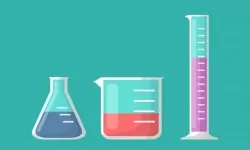
WHO INVENTED THE BEAKER ? History and Origins
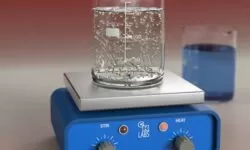
CRYSTALLIZER: Definition, Use, Function and Characteristics

THE CRUCIBLE USES

TYPES OF BEAKERS

SAFETY GOGGLES USES
Other Topics of Interest in ALPHAPEDIA

FREE BACHELOR DEGREE IN PERFORMING ARTS

FREE MASTER DEGREE IN ACCOUNTING AND FINANCE

FREE CERTIFICATE PROGRAM IN CHILD PROTECTION
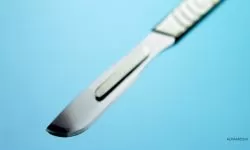
SCALPEL MEANING

FREE DOCTORATE IN THANATOLOGY

FREE MASTER DEGREE IN PHARMACY
Image and Photo of the Laboratory Wash Bottle
